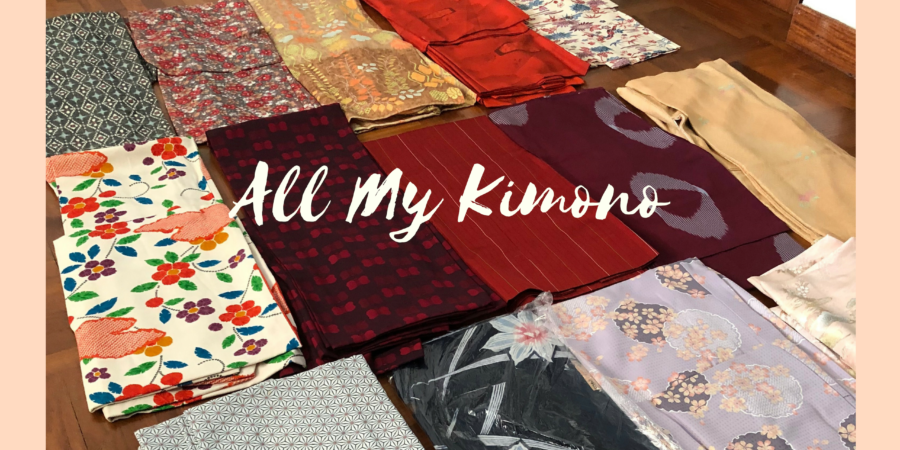I once took a course on how to wear kimono, partly because I thought they were lovely and partly because I owned two sets and didn’t know how to put them on. The course definitely helped me get the basics down, although I definitely need to practice, but one ‘side-effect’ was that I ended up increasing my collection of kimono. My coursemates were all kimono enthusiasts and had a much bigger kimono wardrobe, so whenever they had kimono they wanted to let go, they would pass it on to me.
Considering that I never really changed what I wore that much, wearing kimono being a rare occasion, I ended up with way more than I needed – this is probably one big reason why my moving fees were so expensive. Since my coursemates told me to spread the love of kimono around, I decided to invite two friends over for a kimono party and ask them to take home a piece or two.
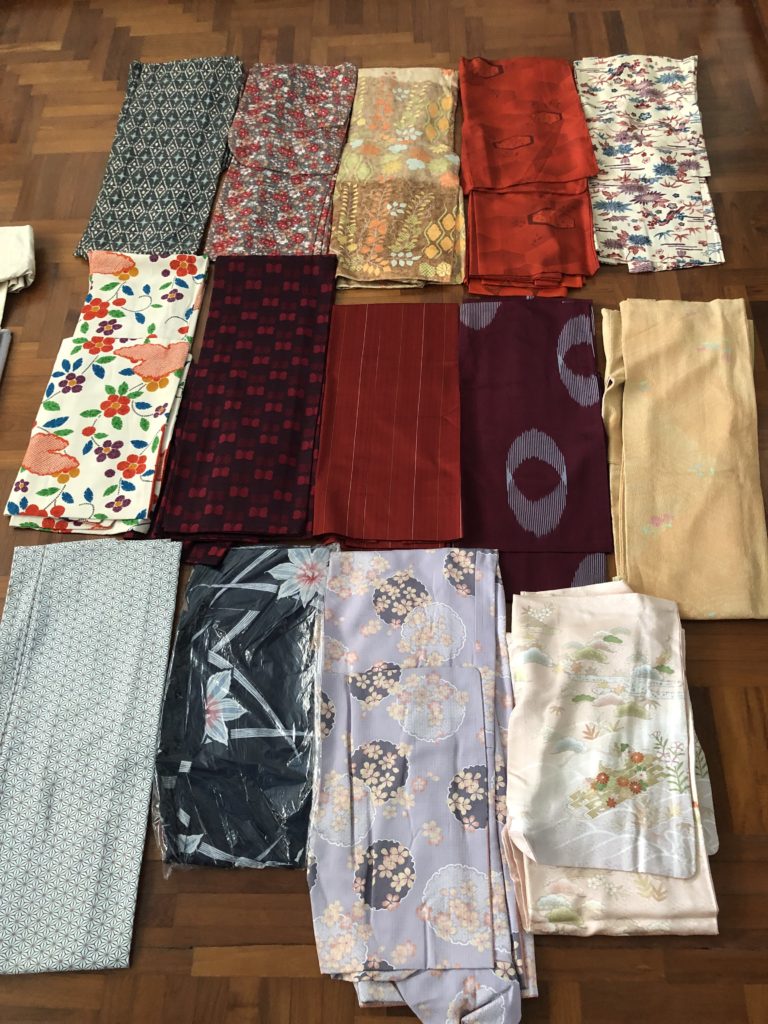
In my mind, I have seven or eight pieces total, so it was a shock to open all of them and find that I have 15 (actually, 16) total pieces. In total, I had:
- 9 Kimono
- 2 Yukata (I’ve got another one lost at home somewhere, hence it’s not in the picture)
- 4 Haori (1 was on top of the other, so the picture is ‘missing’ one)
- 1 Michiyuki
So as a reference for myself, here are the details:
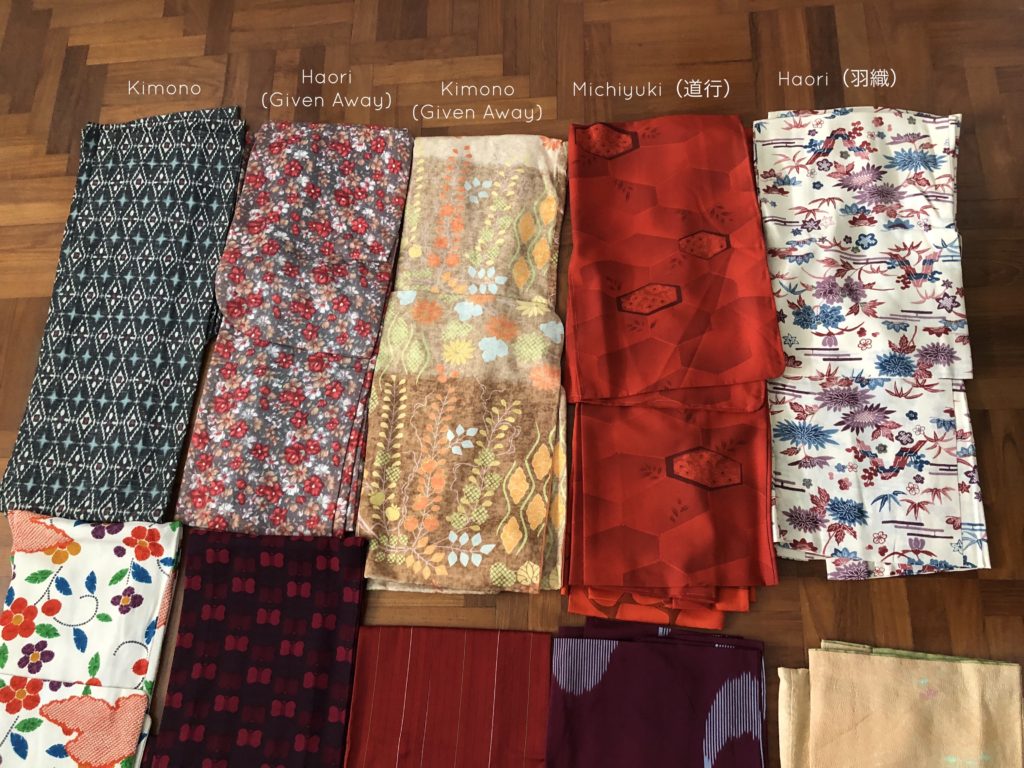
Haori (羽織) are one of the most common kimono outerwear. They used to be for men, but from the Edo period onwards, the Fukagawa geisha (also called Haori geisha) started wearing these. The length of the 羽織 has changed over the years, but it’s currently a long-ish length.
I had my friends try them on too (we were wearing our normal clothes since this session is mostly for them to try on the pieces and see which ones they want):
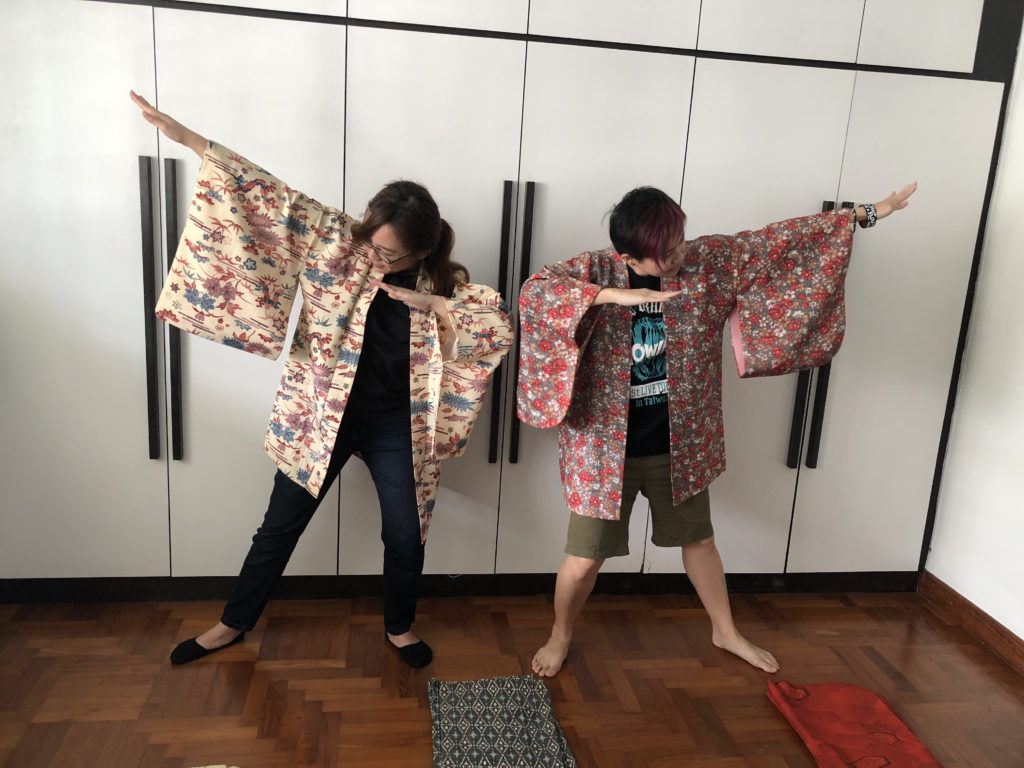
I also have 1 michiyuki (道行), which I don’t have a picture of anyone wearing. The length is similar to the haori, but the front has a square neckline like the kimono rain coat (see below for picture). A 道行 is characterised by its square neckline and it’s basically a coat for kimono and other traditional Japanese clothing. It’s for when wearing just a kimono is too chilly, but you should take this off before you enter your host’s house.
The next few pieces are:
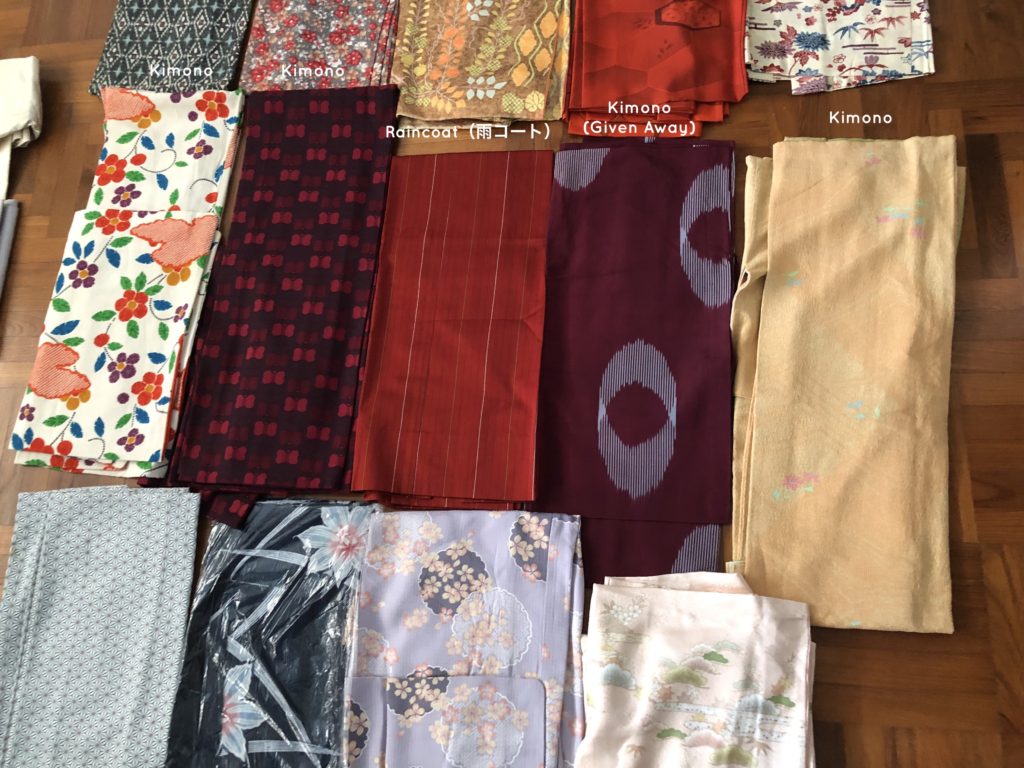
I probably should have asked when I received it, but from the shape and style of the middle piece, I’m pretty sure it’s a kimono raincoat. It could be a michiyuki, but it reaches all the way to the feet so I think it’s more probable that it’s a raincoat. This is what it looks like when worn:

Moving on to the last row:
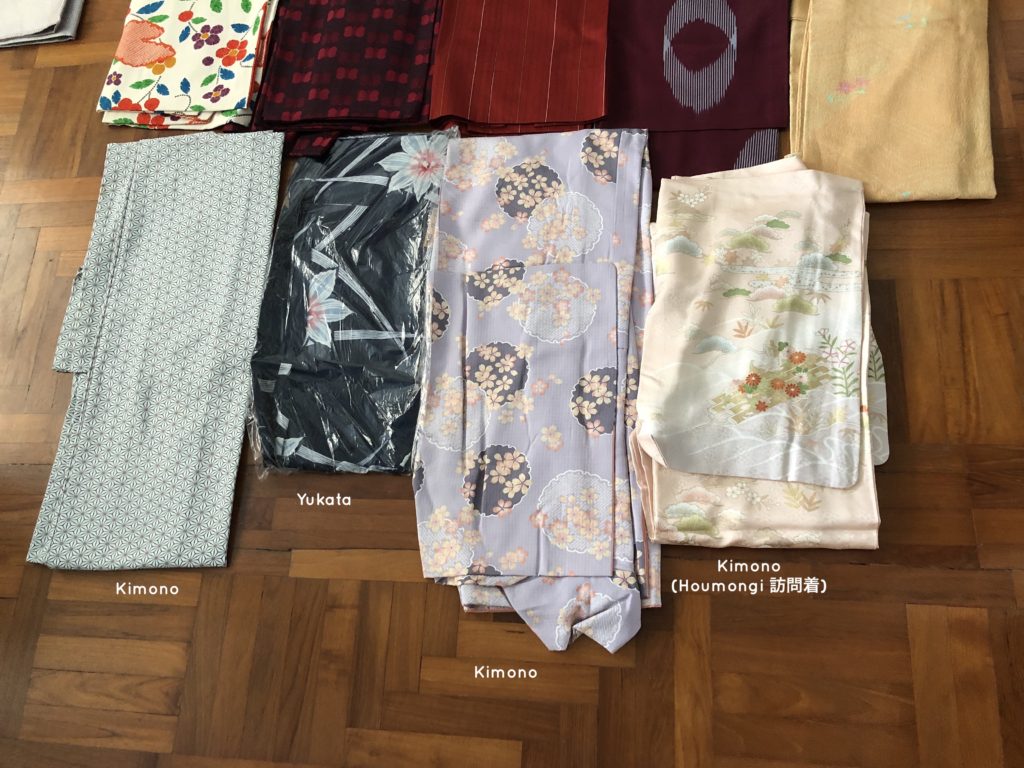
So the two kimono that I actually bought are the two on the left. I also bought the Yukata that I can’t find, but the rest were all gifts. The houmongi (訪問着) on the right is my most formal kimono.
When I was buying my 訪問着, I was trying to choose between that and a furisode (振袖). Both are formal kimono-wear, but I was told that a furisode was for before you were married (and even if you weren’t married, wearing this when you’re older would look weird). So, under the impression that this would be the only kimono I own, I got the 訪問着. It’s a beautiful piece and I ended up getting an obi to go with it.
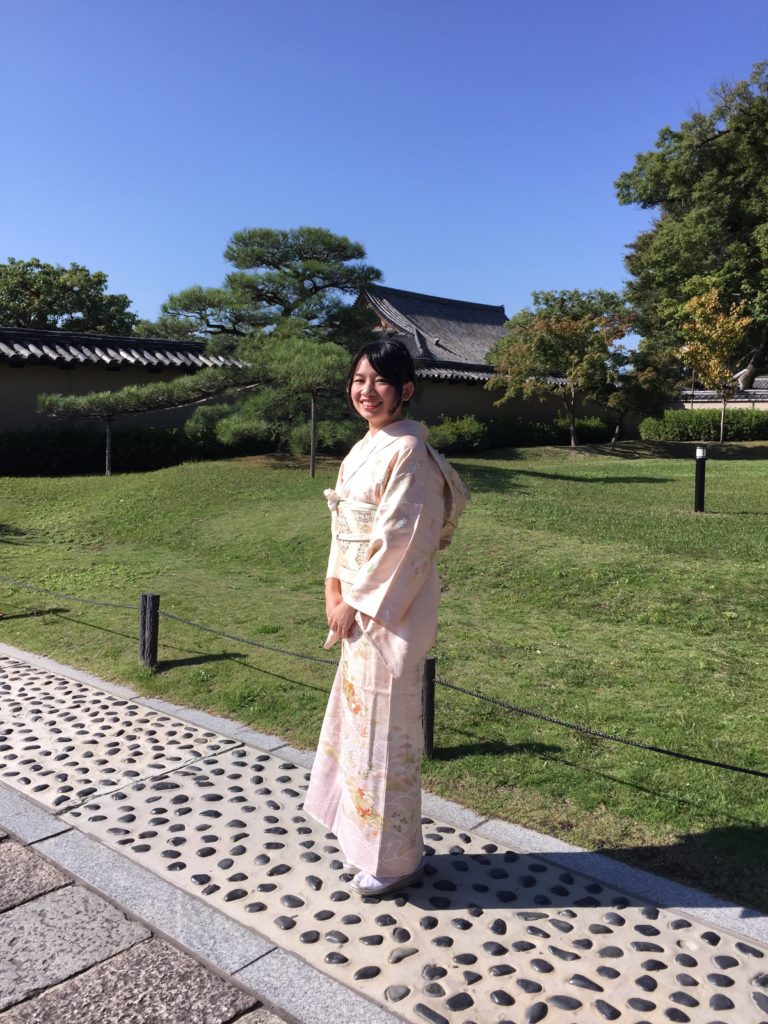
Speaking of obi, these are the ones that I own:
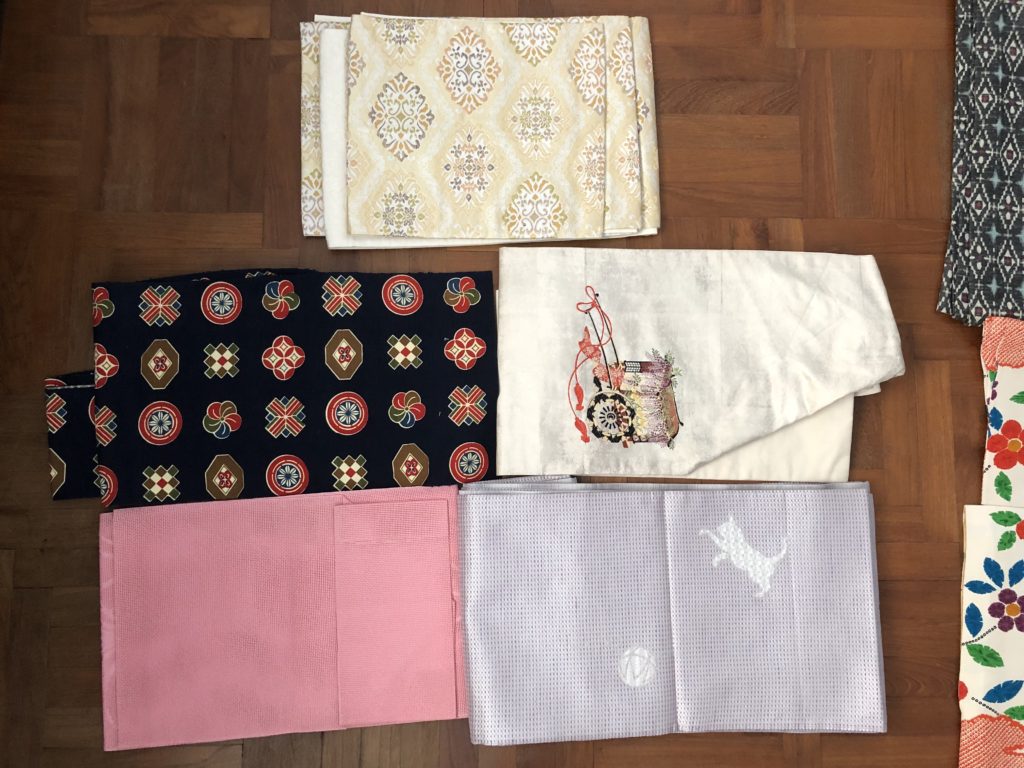
The top obi is my most format one, and the bottom right one was bought to go with the purple kimono in the third row. The rest were given to me and because my kimono coordination is very poor, I’ve only worn each of them once, mostly during kimono classes. Oh, the bottom left one (next to the bottom right one with cats) is pretty interesting – it’s made of a mesh material and according to one of my teachers, is meant to go with summer kimonos.
And of course, I have all the koshihimo (腰紐), obimakura (帯枕), obijime (帯締め), etc required to put on my kimono. Not pictured here because I don’t actually have that many and don’t really need to catalogue that.
So now that my friends have taken away one kimono and one haori each, I’ve got a little more space in the cupboard. If I’m ever in Japan with enough money to spare, I would love to get a summer nagajuban and one more obi that can match the rest of the kimono. I think the nagajuban should be okay if I can try it on in person and make sure it fits (and would make wearing kimono in Singapore a lot more comfortable), but matching an obi to a kimono is a lot harder. Which is another reason why I wrote this post – if I ever need it, I can bring it up and try to use it to find a nice obi.
References
寒い時期だからこその、おしゃれを楽しむ! from 着物屋くるり
Also, I’m biased because I took her class, but Morita-sensei’s book on how to wear kimono is the one that I use as a reference whenever I forget a step.
